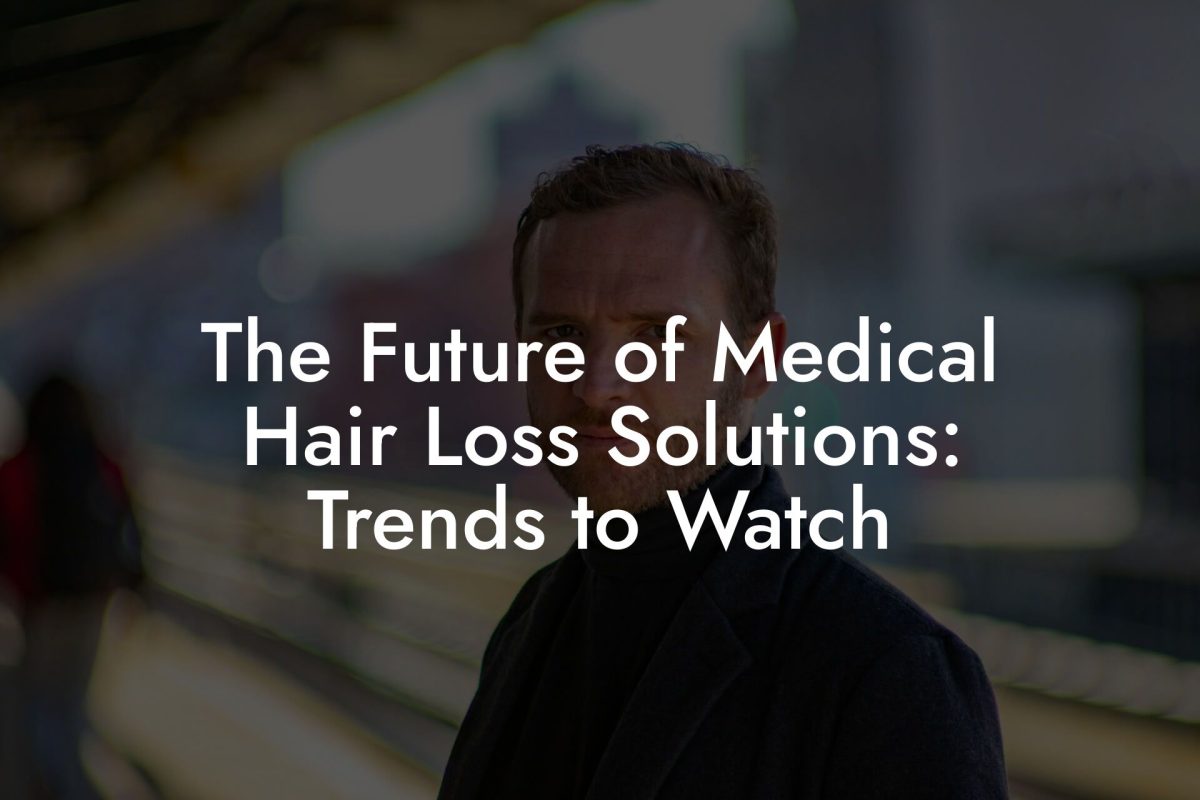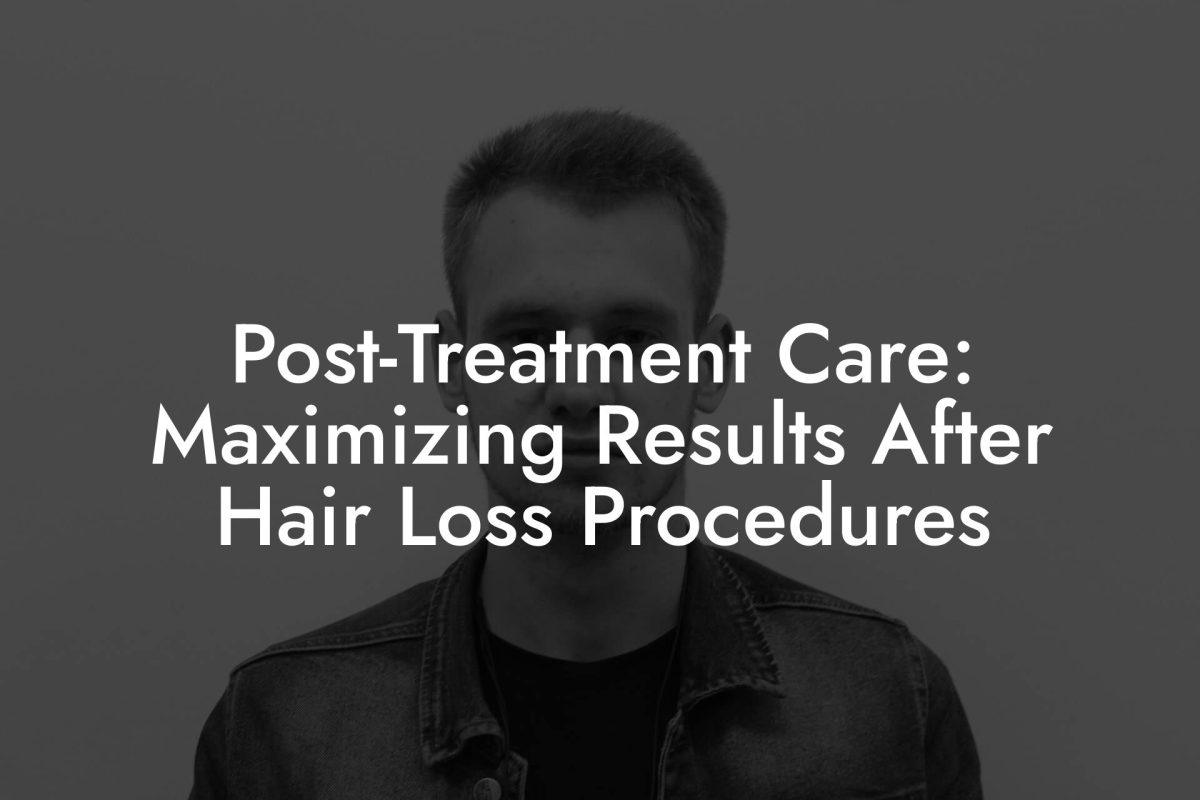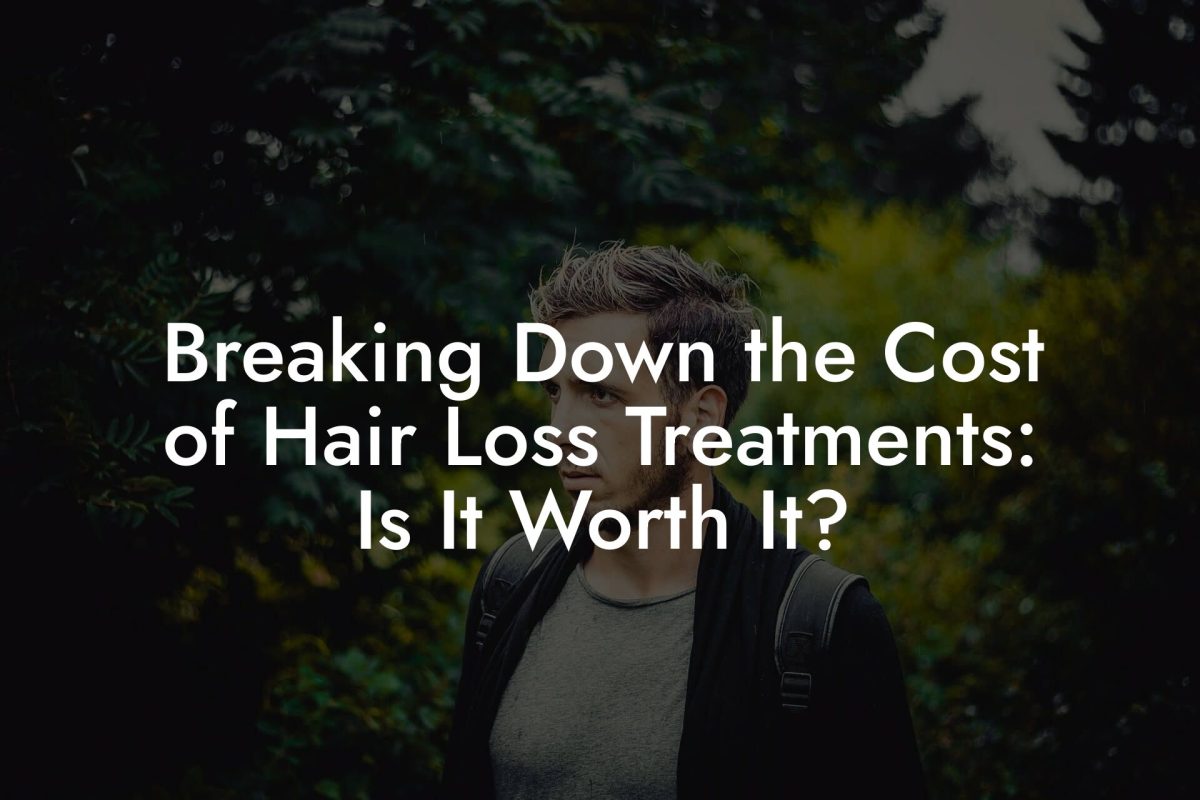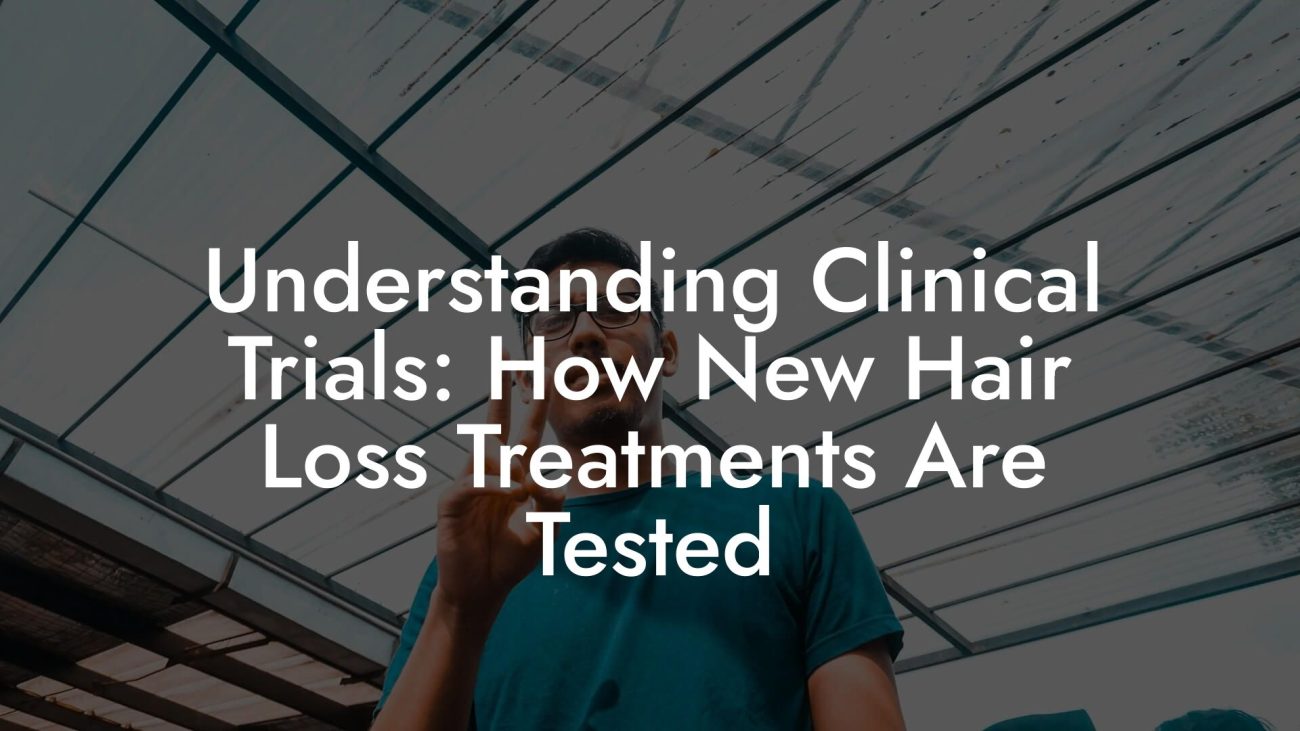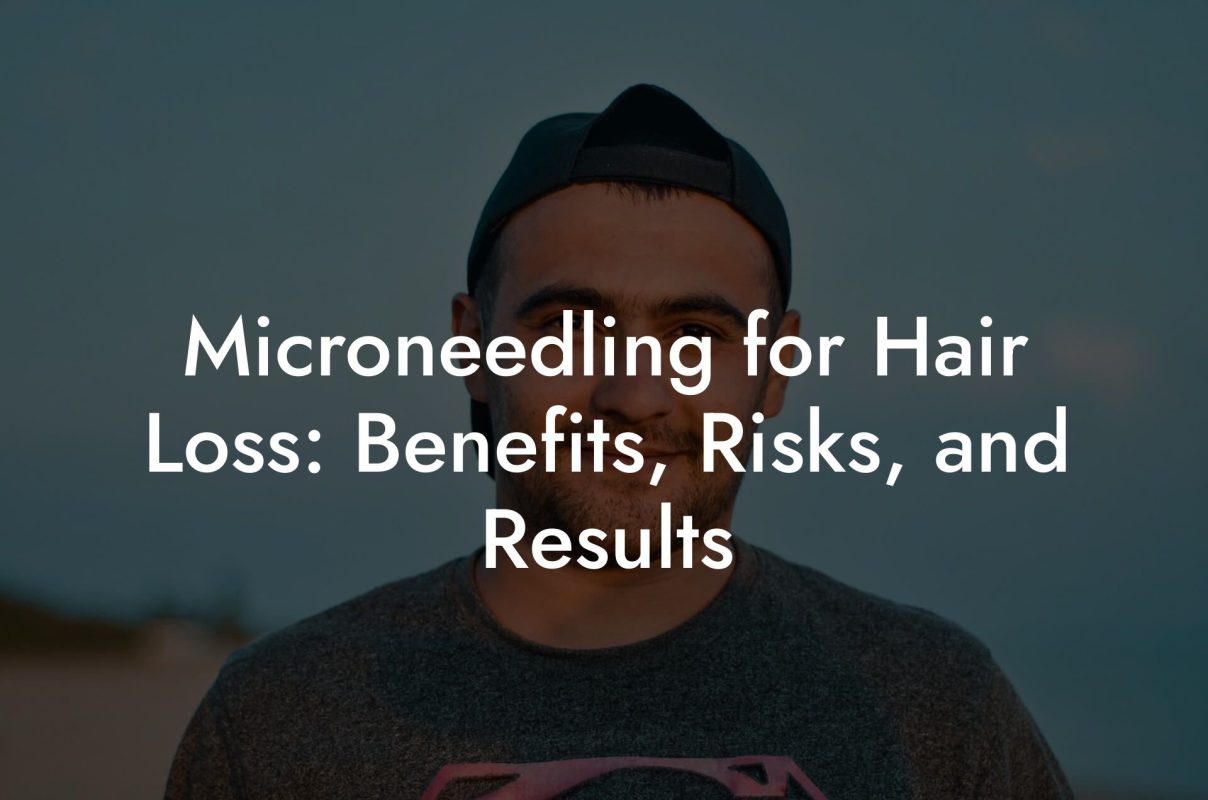Hair Loss Library
Managing Side Effects: What to Expect from Hair Loss Medications

Picture this: you’re all set for a legendary hair comeback when suddenly your trusty hair loss medication starts acting like that unpredictable friend at parties—offering surprises you never really signed up for. Welcome to the world of managing side effects from hair loss medications! Here at Mane Matrix, we know that dealing with thinning hair is stressful enough without having to navigate a minefield of unexpected bodily quirks. So, buckle up as we dive into what you might experience, how to tackle those pesky side effects, and keep your confidence sky-high without having to break the bank or endure awkward medical appointments.
Understanding Hair Loss Medications and Their Side Effects
When you think of hair loss medications, the first thing that might pop into your mind is “miracle cure” or “game changer”—and, in many cases, they can be just that. Whether you’re considering solutions like finasteride, minoxidil, or even newer treatments on the block, these medications generally work by targeting the mechanisms that cause hair thinning and loss. However, every superhero has a weakness, and for these medications, that often comes in the form of side effects.
Let’s be honest: knowing what to expect can make the whole journey a lot less stressful. From minor inconveniences to more noticeable changes, being informed about potential side effects means you’re not caught off guard. And in a world where both millennial hustle and Gen Z authenticity reign supreme, you deserve a straightforward breakdown of what might happen, why it happens, and, more importantly, what you can do about it.
At Mane Matrix, we believe that no man should be forced to suffer in silence or deal with embarrassing, unexpected bodily changes alone. So, grab a cup of your favorite brew (coffee, matcha, or whatever keeps you moving) and let’s unwrap the details.
How Hair Loss Medications Work: The Science Behind the Magic
First, a quick pit stop at Science 101: hair loss medications like finasteride and minoxidil don’t just randomly make your hair grow; they work by disrupting the processes that lead to hair miniaturization and eventual loss. Finasteride, for example, plays a starring role by blocking the conversion of testosterone to dihydrotestosterone (DHT)—the hormone largely responsible for hair follicle shrinkage in many men. Minoxidil, on the other hand, is a vascular wonder drug that improves blood flow to the scalp, giving those hair follicles a little extra oomph.
But with great power comes great responsibility—and possible side effects. Sometimes, the medications might impact other parts of your system, much like that overenthusiastic party guest who makes an unexpected appearance. Understanding the “why” behind these side effects not only demystifies them but also empowers you to manage them more effectively.
Remember, every medication has its balance of benefits and potential drawbacks, and while the benefits for hair regrowth can be significant, being proactive about the side effects is your best defense in keeping your life running as smoothly as your favorite playlist.
Common Side Effects of Hair Loss Medications: What to Keep in Mind
Despite their effectiveness, hair loss medications have some side effects that might sound like warnings from a futuristic sci-fi movie. Let’s debunk and detail them, so you know exactly what might happen when you take the leap:
1. Sexual Side Effects
Finasteride has a notorious reputation for causing sexual side effects, such as reduced libido, erectile dysfunction, or decreased volume of ejaculate. While these effects are generally reported as rare and reversible upon discontinuation, they can be distressing if they occur. The good news? Many men do not experience lasting issues, and with some expert tweaking of dosage or timing, these effects can often be managed.
2. Skin Irritation and Dermatitis
Minoxidil, often used topically, might cause skin irritation, dryness, or redness at the application site. It can feel like your scalp is hosting its own tiny rave—unwanted and usually short-lived. If you’re experiencing persistent irritation, switching application routines or trying a different formula could be your ticket to comfort.
3. Dizziness and Lightheadedness
Some users report feeling a bit off-balance or dizzy, especially when first starting the medication. This is particularly the case with treatments that affect blood flow. It’s like your body suddenly decides to do a little extra cardio without your consent—funny in theory, but not always welcome in the morning.
4. Hormonal Imbalances
Hormonal shifts can lead to mood swings, fatigue, or even unexpected changes in body composition. It can be a confusing time when your mind is clear on wanting to bounce back from hair loss but your hormones seem to have their own remix. A balanced diet, adequate sleep, and stress management can increasingly help quell these effects.
5. Unpredictable Effects on Hair
Ironically, some men notice an initial shedding phase when they first start using medications like minoxidil. Don’t freak out—this temporary hair loss is often a sign that the medication is working its magic by making way for new, stronger strands to emerge.
It’s important to note that side effect experiences vary widely from person to person. What one guy experiences might be completely different from another. The key here is to monitor your body’s responses, and if something seems off, remember that adjustments to treatment are always an option.
Navigating the Side Effects: Strategies That Actually Work
Now that you’re armed with knowledge about what might go wrong, let’s talk solutions. Managing side effects is not about giving up on your hair restoration journey—it’s about tweaking your approach until you find your perfect balance. Here are some practical, down-to-earth strategies:
Optimize Your Dosage and Regimen
Sometimes, less is more. If you’re experiencing troublesome side effects, consider discussing with a specialist or simply re-evaluating your dosage. A slight adjustment could make all the difference. It’s like fine-tuning the settings on your favorite game—you want to get the highest performance without those achy glitches.
Alternate Between Medications
Some men find that alternating between hair loss medications can help minimize side effects while still supporting hair regrowth. For instance, you might switch between cycles of finasteride and minoxidil to give your body time to adapt. Think of it as your hair’s version of cross-training—it keeps your system guessing and prevents overexertion.
Incorporate a Skincare and Scalp Care Routine
For topical treatments, your scalp needs some extra TLC. A gentle cleansing routine, combined with a soothing moisturizer or barrier repair cream, can help mitigate the irritation that often accompanies minoxidil use. Yes, your scalp deserves a spa day, too!
Nutrition: Feed Your Follicles Right
Your diet plays a bigger role in hair health than you might think. Incorporating foods rich in vitamins (like vitamin D, biotin, and zinc) and antioxidants can support both the restorative effects of your medication and overall hair health. Incorporate leafy greens, nuts, fish, and berries into your daily meals—your follicles will thank you later.
Stress Management: Let’s Mind the Mind
Stress can amplify side effects and even trigger additional hair loss. Whether it’s through mindfulness meditation, yoga, a little exercise, or just jamming out to your favorite tunes, finding ways to manage stress is essential. Your mind and body are inextricably linked, and a balanced mindset can help keep your hormones—and hair follicles—in check.
Give Your Body Time to Adjust
It might sound cliché, but patience is a virtue. Many side effects are transient—a passing storm before the bright, clear skies of regrowth set in. Stick with your routine, monitor your progress, and don’t hesitate to reach out to knowledgeable sources or experts if something doesn’t feel right.
By blending these strategies into your daily life, you’re not just managing side effects; you’re optimizing your overall approach to hair health.
Integrating Lifestyle and Holistic Approaches
Aside from the medications themselves, a well-rounded approach to managing hair loss is all about embracing lifelong habits that promote overall wellness. Our bodies are complex, interconnected systems, and nurturing your mental and physical health through lifestyle changes can often alleviate or mitigate the harsh side effects of medications.
The Power of Exercise
Regular exercise isn’t just for bulking up or torching calories—it boosts circulation, improves hormonal balance, and helps reduce stress. Whether you’re crushing it at the gym, jogging in your local park, or simply taking a brisk walk while listening to your favorite podcast, keeping your body active promotes a robust environment for hair growth.
Mental Health and Mindfulness
Dealing with hair loss and its accompanying side effects can sometimes feel like a roller coaster for the emotions. Integrating mindfulness practices like meditation, deep breathing exercises, or even a little journaling can help you maintain clarity and keep stress levels low. Think of it as giving your mind the same nourishment you’d offer your hair: quality care is a game changer.
Healthy Diet and Hydration
The age-old adage “you are what you eat” rings especially true here. A balanced diet replete with essential nutrients—not just for muscle or brain power, but for that glorious mane—is key. Hydration also plays an underrated role; water is the secret ingredient that helps keep cells thriving and hair follicles active.
Sleep: Your Natural Recharge
Sleep is your body’s time to repair and regenerate. Ensuring you get a solid 7-9 hours per night can not only help improve your mood and energy levels but also create the best possible conditions for your hair to flourish—even in the face of side effects.
By framing these holistic practices as integral components of your hair care routine, you create a symphony of supportive habits that work in tandem with your medications. The result? A healthier scalp, improved treatment outcomes, and a lifestyle that feels as good as it looks.
Customizing Your Treatment Plan: Tailoring Solutions for Real Lives
One of the biggest misconceptions out there is that there’s a one-size-fits-all solution to hair loss and its side effects. Reality check: every body is unique, and what works wonders for one might not suit another. The secret sauce is personalizing your treatment plan to align with your specific needs, lifestyle, and goals.
Assess Your Starting Point
Begin by tracking your current side effects and overall health. Are you noticing any patterns? Do particular side effects pop up after certain days or routines? Keeping a journal of your experiences—with notes on dosage, the time of day you take your medication, and even your mood—can be incredibly helpful. This serves as your base map for making informed adjustments.
Set Realistic Goals
Whether your aim is to boost hair regrowth, maintain a healthy scalp, or simply manage pesky side effects, setting clear, measurable goals is crucial. Think of these goals as your checkpoints in a video game—each small achievement brings you closer to leveling up both your hair and your confidence.
Mix and Match Tactics
As we mentioned earlier, combining your primary medication with supplementary lifestyle changes, nutritional tweaks, and even alternate application schedules can create a bespoke therapeutic approach just for you. Collaborate with experts available through Mane Matrix or trusted professionals who understand the nuances of hair health. And remember, adjustments are part of the journey—what matters is that you keep evolving your plan as you learn more about how your body responds.
Feedback and Flexibility
Your treatment plan is a living document. Regularly check in with your own experiences and, if needed, consult with folks who understand the intricate dance between medications and lifestyle. Whether it’s tweaking the dosage, trying a different application method, or incorporating new dietary habits, flexibility is your friend. After all, life isn’t static—and neither should your hair care routine be.
By taking control and personalizing your approach, you’re not just managing side effects—you’re taking charge of your hair’s destiny.
Resources and Community Support: Your Next Steps
Navigating the complexities of hair loss treatments can sometimes feel like you’re wading through a maze. But here’s the good news: you’re not alone on this journey. There are countless resources—and communities—ready to support you as you work to master the art of managing side effects while aiming for that hair comeback.
Online Forums and Social Media Groups
The internet is bustling with communities where fellow warriors share their experiences, success stories, and tips. Platforms like Reddit, Facebook groups, and hair loss dedicated forums can be gold mines for firsthand accounts and practical advice. These communities not only offer solidarity but also provide real-time insights into how others are successfully navigating treatment side effects.
Informative Blogs and Websites
Knowledge is power, and there are plenty of reputable blogs, websites, and YouTube channels dedicated to explaining the ins and outs of hair loss medications. At Mane Matrix, we strive to be one of your go-to resources for clear, honest, and relatable content—without the fluff of expensive consultations or the embarrassment of in-person appointments.
Mobile Apps and Tech Tools
In today’s digital age, your smartphone can be your best buddy. Apps designed to track side effects, remind you of dosages, or even provide mindfulness exercises can really boost your self-care routine. It’s about integrating smart technology with proactive health management.
Professional Consultations on Your Terms
While our approach at Mane Matrix is all about simplifying expert analysis without the awkward doctor visits, there are telehealth services available if you feel you need that extra layer of personalized advice. A quick virtual consultation might just provide the reassurance you need to tweak your regimen rather than completely overhaul it.
Your journey to managing hair loss isn’t just a solo mission—it’s a community movement. Tap into these resources, share your experiences, and lean into the collective wisdom that’s out there. Remember, knowledge shared is confidence gained!
Real-Life Transformations: Case Studies of Hair Loss Medication Journeys
Sometimes, hearing about someone else’s journey can be the best motivator of all. Let’s take a look at a few case studies that illustrate how real men have navigated the ups and downs of hair loss medications—and come out victorious.
Case Study 1: The Finasteride Adjustment
Meet Alex, a 32-year-old urban professional who opted for finasteride to combat his early signs of hair thinning. Initially, Alex experienced mild sexual side effects which left him a bit unsettled. Rather than throwing in the towel, he collaborated with his support network at Mane Matrix to fine-tune his dosage. By slightly reducing his intake and incorporating a robust regimen of exercise and stress management techniques, Alex managed to strike a balance: minimizing side effects while still reaping the benefits of improved hair density.
Case Study 2: Embracing the Minoxidil Shedding Phase
Then there’s Jordan, a 28-year-old creative hustler who dove headfirst into minoxidil. True to form, he was hit with the dreaded shedding phase during the first few weeks. Knowing that this was a temporary but nerve-wracking period, Jordan armed himself with research, support from online communities, and strategic scalp care routines. With time, not only did his hair begin to thicken, but his newfound knowledge of self-care turned the shedding phase into an empowering stepping stone toward fuller hair.
Case Study 3: Holistic Adjustments for Hormonal Balance
Finally, consider Marcus, a 40-year-old contractor who wasn’t just battling hair loss—he was also dealing with hormonal swings that made his overall energy levels plummet. By adopting a holistic approach that combined his prescribed medication with nutritional adjustments, group workouts, and mindfulness sessions, Marcus managed to stabilize his mood and keep his side effects in check. His multi-pronged strategy not only improved his hair regrowth outcomes but also boosted his overall well-being, proving that a comprehensive approach can yield transformative results.
These case studies remind us that hair loss medication journeys are as unique as the men experiencing them. With patience, personalization, and the right strategies, the road to a rejuvenated mane is well within reach.
Creating Your Personalized Game Plan for Managing Side Effects
Implementing a custom plan is like assembling your own superhero toolkit—one designed specifically for your lifestyle, body, and hair goals. Here’s a step-by-step guide to crafting a plan that’s as unique as you are:
Step 1: Document Your Experience
Start by keeping a detailed log of your medication use, any side effects (when they occur, their intensity, and duration), and your overall well-being. This will help you identify patterns and work out if there’s anything specific triggering the side effects.
Step 2: Set Measurable Goals
Determine what you want to achieve. Is it reducing the side effects to a barely-there whisper? Is it enhancing your hair regrowth while keeping daily routines smooth? Define your objectives clearly, and use your log to measure progress.
Step 3: Adjust Your Routine
With your goals in mind, experiment with tweaks—be it dosage adjustment, alternating application methods, or integrating complementary routines like scalp massages and dietary shifts. Small changes can lead to significant impacts over time.
Step 4: Engage with Support Systems
Whether it’s a virtual consultation with Mane Matrix experts or participating in online forums, connecting with those who have been there can give you insights that are both comforting and effective.
Step 5: Be Ready to Evolve
Finally, give yourself grace. What works today might need fine-tuning tomorrow. Continuous self-evaluation and openness to change will keep your hair loss journey on track.
With your personalized game plan as a solid blueprint, you’re ready to take on the challenges—with science on your side and a bucketful of resilience.
Your Journey to a Confident, Empowered Future
Embracing hair loss medications and their potential side effects doesn’t have to be a daunting ordeal. It can be a transformative journey—a chance not only to reclaim your hair but to bolster your overall health and confidence. With thorough knowledge, practical strategies, and the support of communities and experts alike, you’re equipped to navigate this path with humor and authenticity.
Each challenge along the way is an opportunity to learn more about your body, build resilience, and come out the other side a stronger, more self-assured version of yourself. Whether it’s adjusting your dosage, implementing a new skincare routine, or simply learning to laugh at life’s quirks, every step you take is a victory in your journey.
So here’s to facing side effects head-on, empowered with knowledge, humor, and the confidence that your best days—and your best hair—are ahead of you. Keep pushing forward, stay informed, and remember: at Mane Matrix, you’re never alone in your quest for true hair health.
Frequently Asked Questions About Managing Hair Loss Medication Side Effects
Below are some common questions and answers that can help demystify your hair loss treatment journey:
1. What are the most common side effects of hair loss medications?
Many users report minor sexual side effects, skin irritation (especially with topical treatments), temporary hair shedding, and sometimes mild dizziness or hormonal changes. These effects vary greatly from person to person.
2. Is the initial hair shedding a sign that minoxidil is actually working?
Yes, the initial shedding phase is often a sign that your hair follicles are making way for newer, stronger hair. It’s temporary and usually subsides within a few weeks.
3. Can I reduce side effects by adjusting my medication dosage?
In many cases, a slight dosage adjustment may help alleviate bothersome side effects. However, any changes should be done gradually and ideally under guidance from a knowledgeable expert.
4. What lifestyle changes can help manage medication side effects?
Incorporating a balanced diet rich in vitamins, regular exercise, adequate hydration, stress management techniques, and a proper skincare routine for your scalp can all help alleviate side effects.
5. How long do side effects typically last?
Most side effects are temporary and reduce as your body adjusts to the medication. However, if an effect lingers or worsens, it’s important to re-evaluate your treatment plan.
6. Should I consult a healthcare professional if I experience severe side effects?
Absolutely. While Mane Matrix provides expert analysis without embarrassment or hefty fees, any severe or unexpected symptoms should be discussed with a healthcare provider.
7. Can combining different treatments worsen side effects?
Combining treatments without proper guidance may amplify side effects. It’s crucial to develop a comprehensive plan that integrates various approaches safely.
8. What role does stress play in side effects from hair loss medications?
Stress can exacerbate side effects by unbalancing hormone levels and interfering with the body’s natural healing processes. Mindfulness and relaxation techniques can help mediate this.
9. Are there non-medication therapies to support hair health?
Yes! Holistic approaches like nutritional support, scalp massages, stress management, and the use of quality hair care products can complement your medication regimen.
10. How often should I monitor my progress?
Keeping a regular journal of your experiences, ideally daily or weekly, can be very beneficial. This practice helps you identify any trends or changes needing adjustment.
Embrace the Journey Toward Renewed Confidence
Managing side effects from hair loss medications isn’t merely about taming the unexpected—it’s a testament to taking charge of your health, your look, and most importantly, your confidence. Every adjustment, every tweak, and every moment of research is a step forward in reclaiming not just your hairline, but your sense of self.
Whether you’re a millennial balancing work and life, or a Gen Z trendsetter carving out your niche in the world, know that your journey is uniquely yours—filled with challenges, victories, and lessons that contribute to the overall masterpiece that is you.
Here at Mane Matrix, we’re by your side with expert insights, community-driven support, and a commitment to keeping the conversation as real and relatable as possible. Embrace the journey, celebrate each win (no matter how small), and remember: your path to a confident, empowered future is just beginning.
Step forward with the assurance that you’re not just managing side effects—you’re mastering your destiny, one confident step at a time.
If you loved this article... Dive deeper into the world of mens hair loss with our most popular sections. If there is anything you think is missing or anything you would love for us to write about, just give us a shout.
Prescription Solutions: The Best Medications for Men’s Hair Loss
Minoxidil & Beyond: Exploring Topical Treatments for Hair Regrowth
How Finasteride Works: The Science Behind This Hair Loss Blocker
Platelet-Rich Plasma (PRP) Therapy: Is It the Answer to Hair Loss?
Hair Transplant 101: A Beginner’s Guide for Men
Exploring Laser Therapy: Non-Invasive Options for Hair Regrowth
The Pros and Cons of Oral Hair Loss Medications
New Frontiers in Hair Loss Treatment: Stem Cell Therapy Explained
Surgical vs. Non-Surgical: Which Hair Loss Treatment Is Right for You?
Understanding Combination Therapy for More Effective Hair Regrowth
How to Choose the Right Hair Loss Clinic: Expert Tips
Exploring Off-Label Treatments: What’s Worth Trying for Hair Loss?
Managing Side Effects: What to Expect from Hair Loss Medications
The Latest in Hair Loss Research: Emerging Medical Treatments
Microneedling for Hair Loss: Benefits, Risks, and Results
How PRP Therapy Boosts Hair Growth: A Closer Look
The Role of DHT in Hair Loss and How Medications Counteract It
Customized Treatment Plans: Tailoring Hair Loss Solutions for You
Understanding Clinical Trials: How New Hair Loss Treatments Are Tested
Breaking Down the Cost of Hair Loss Treatments: Is It Worth It?
How to Prepare for a Hair Transplant: A Step-by-Step Guide
Post-Treatment Care: Maximizing Results After Hair Loss Procedures
A Doctor’s Perspective: When to Consider Medical Hair Loss Treatments
Success Stories: Real Men Share Their Hair Restoration Journeys
The Future of Medical Hair Loss Solutions: Trends to Watch





